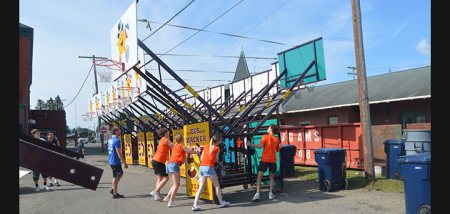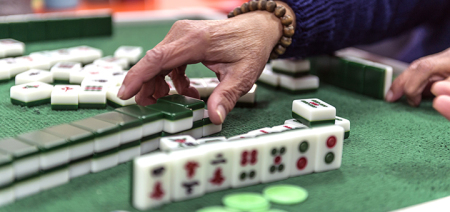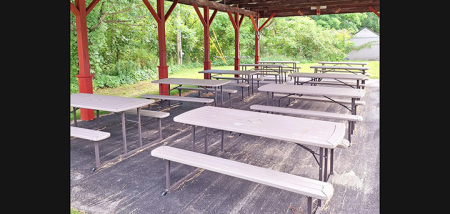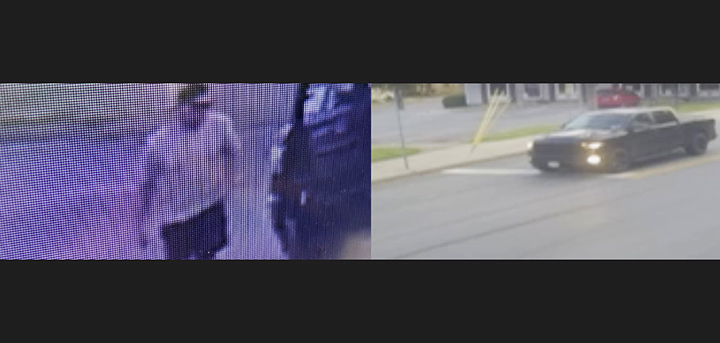What Tools Do I Need To Train My Dog?
Published:
July 27th, 2023
By:
Sarah Genter
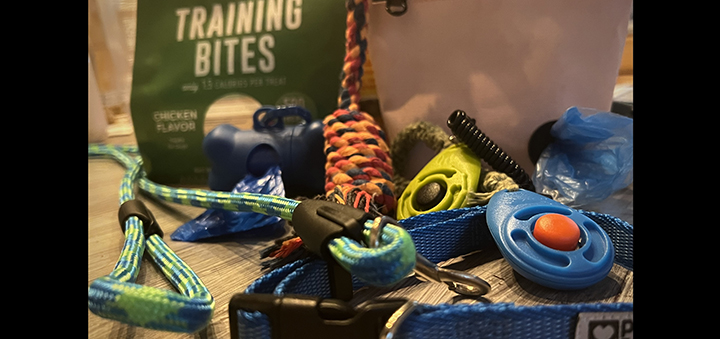 There are so many options to choose from when it comes to training tools. Choose tools that work for your needs and the needs of your dog. A good starting point is a well-fitting collar, or harness if your dog's size or strength requires it, a sturdy leash, a training pouch, and training treats. (Photo by Sarah Genter)
There are so many options to choose from when it comes to training tools. Choose tools that work for your needs and the needs of your dog. A good starting point is a well-fitting collar, or harness if your dog's size or strength requires it, a sturdy leash, a training pouch, and training treats. (Photo by Sarah Genter)
Maybe you’ve just brought a new puppy home, or maybe you’re looking to train a dog you’ve had for years; Either way, figuring out what supplies you need to train your dog can be overwhelming.
From collars to crates to clickers and more, there is no shortage of dog training supplies on the market. But what do you really need?
Dog training tools and supplies that will be beneficial to you will largely depend on your dog and what you’re hoping to accomplish through training. Your dog’s size and strength will impact what type of collar or harness and crate you need, while basic obedience, leash, and more advanced training all have different equipment needs.
Keep in mind this is by no means an exhaustive list, but it’s a good jumping off point for those looking to train their dogs. As always, do your own research and consult with a professional trainer or veterinarian with any questions or concerns.
Collars and harnesses
There is a seemingly endless variety of collars available for dogs of all sizes. Most common are flat collars made of nylon or leather. A collar is a must for your dog, as most have D-rings for you to attach your dog’s name tag (with your contact information in case your pup runs away!), rabies tag, and dog license.
But beyond standard collars, there are other options out there depending on you and your dog’s needs. Martingale collars, for example, are great for dogs with necks that are bigger than their heads, such as whippets.
The martingale collar loops around your dog’s neck like other collars, but it also has an additional loop for you to attach a leash. The loop around your dog’s neck will tighten without choking if they pull on the leash, for example, which can prevent them from slipping out of the collar.
These can be very useful if your dog is an escape artist, however martingale collars should never be left on your dog unsupervised. The extra loop can easily get caught on objects and potentially strangle your dog.
If your dog is very small, opting for a harness is a better choice, especially if they have a tendency to pull on the leash. All the pressure from leash pulling on a small dog’s throat can easily damage their trachea and make it difficult to breathe.
The most common style are back-clip harnesses, however they may encourage leash pulling in a dog that already pulls, as it centers the dog's weight and makes pulling easier.
A solution to leash pulling is a front-clip harness. Designed similarly to back-clip harnesses, what sets these apart is a clip for the leash on the dog's chest. When the dog pulls on the leash, it will naturally redirect your dog’s weight and pull them in a circle.
This allows you to implement negative punishment – taking away something the dog wants or enjoys to discourage an unwanted behavior. Your dog will learn that pulling to get where they want to go actually has the opposite effect. Pairing this with positive reinforcement through treats and praise when your dog walks in heel will help greatly with leash training.
Shock, prong, and choke collars
Some collars on the market are examples of aversive training tools, meaning they use positive punishment to train your dog. Positive punishment involves adding in a consequence (positive) your dog finds unpleasant in order to discourage an unwanted behavior (punishment).
This is seen in the shocks provided by e-collars, the tightening of choke collars, and the poking or pinching of prong collars. These tools can be used to train a dog not to bark, or not to pull on the leash, as they will be met with something unpleasant each time and will stop the unwanted behavior to avoid the unpleasant stimulus.
The problem with aversive training methods and tools is that they can easily be misused, whether accidentally or purposely, and can even cause a dog to become fearful of their owner, as they may associate the unpleasant stimulus with the person delivering it.
You should always aim to use the least aversive training method possible when teaching or discouraging a behavior. However, if consistent non-aversive training is used for some time with no results, you may need to switch to using positive punishment to discourage behavior.
Before implementing positive punishment or using aversive training tools, always consult with an experienced professional trainer and/or veterinarian for proper collar fitting and instruction on how to safely use these methods. Always remember training and training tools should never physically or psychologically harm your dog.
Leashes
Beyond collars and harnesses, the next item you definitely need is a leash. Like collars, there is a huge variety of leashes out there in a variety of lengths, styles, and diameters. You can get leashes made out of leather, nylon, rope, chain, fabric, and more.
Most standard leashes are a length of six feet, and more often than not this will be sufficient for training your dog basic obedience and leash training.
A popular option among dog owners are retractable leashes, which involve a large plastic handle and a thin cord that extends and retracts depending on the distance your dog is from you. Although these leashes are extremely popular, they are actually very dangerous.
While most, if not all, retractable leashes feature a button to lock the leash at a certain length, if a dog owner isn’t paying attention the dog can easily stray very far and get into things they shouldn’t, or worse, end up in traffic.
Plus, if you allow your dog to roam and something dangerous were to happen, it will delay your ability to get to them and administer aid.
The cords used in retractable leashes are often very thin as well, making them prone to breakage, especially if your dog is very strong or an active leash puller. Should your dog bolt after another animal while out on a walk, the line may snap, completely eliminating your control and ability to stop your dog from being hurt.
Crate
I highly recommend crate training your dog. Don’t worry, we’ll get into all the reasons why in a future column. The short explanation, however, is that a crate provides a safe space for your dog to go when they want to relax and not be bothered. Plus, crate training is great for house training your dog, and preventing them from getting into trouble when you're not home.
It's important to buy the correct size crate for your dog; You want it to be large enough for them to stand up and spin around. Dogs will also avoid going to the bathroom where they sleep, so you want to avoid a spacious crate for your pup – this may encourage them to make messes in their crate!
A good rule of thumb is to measure your dog's height from the top of their head to the floor, and their length from the tip of their nose to the tip of their tail. Add four inches to each measurement, and you've got your crate size!
Crates are available in a variety of styles. You could opt for a crate carrier to serve as your dog's safe space at home as well as a carrier to use while traveling. Wire crates are popular as well, and most come with a divider panel which allows you to expand the space available to your dog as they grow.
Don't forget to get a cozy crate pad as well! These can vary in thickness, stuffing, and material. You might choose a fuzzy stuffed pad, a memory foam pad covered in smooth suede, or even a mat covered in canvas to keep your pooch cool in hot weather. The options are endless!
Other tools
In addition to the other tools mentioned, there are a few fun extras you could add into your training repertoire.
A treat pouch and training treats are an absolute must, especially if your dog is food motivated! Like everything else, there is a seemingly endless array of treat pouch sizes, materials, and designs. I've personally tried a small drawstring pouch that clips onto a belt loop; a large, stiff, bag-like pouch with extra pockets for potty bags, a clicker, and even my phone; and a large magnetic-closure pouch on a belt.
My personal favorite so far is the magnetic-closure treat bag. The opening is large enough to easily reach in and grab a treat, which is a must for quickly rewarding your dog. The magnetic snap keeps nosy dogs from stealing treats, but is still easy enough to pop back open during training.
I also highly recommend incorporating a clicker into your training. Clickers are used to mark the behavior you're trying to train, and bridge the gap between the behavior and reward. Clickers are super easy to use and implement, and can make learning much easier for your dog.
Depending on your training needs, you may also opt for a target stick. These are extendable metal sticks, usually with a small plastic ball on the end and a handle with a clicker button. You can teach your dog to follow the target, then use the target stick to train several behaviors, from walking at heel to spinning in a circle, to going into their crate on command.
Ultimately, the tools you use for training are up to you. Choose tools that fit your needs and the needs of your dog. There's no point in buying a target stick if your dog already knows most of what you could teach them with it!
At a minimum, though, it's a good idea to get a well-fitting collar, a harness if you need one based on your dog's size and strength, a sturdy leash (no retractable leashes!), a treat pouch, and training treats. Using a crate and a clicker are also good ideas, and something I recommend, but you can still train your dog without them. Again, it's up to you!
Do you have any questions about training tools? Or any other facet of dog training? Send me your questions at sgenter@evesun.com for the chance to have your question answered in a future column! Please note as I am still earning my certification I may wait to answer some questions until I have the proper training and experience to provide a thorough and accurate answer.
Author: Sarah Genter - More From This Author
Comments
